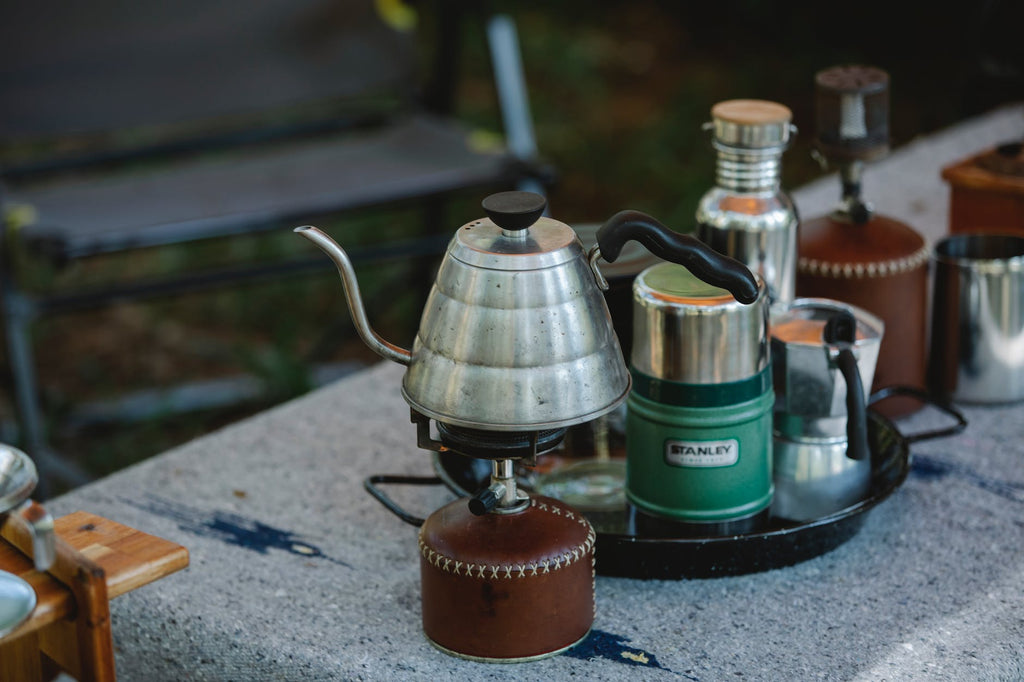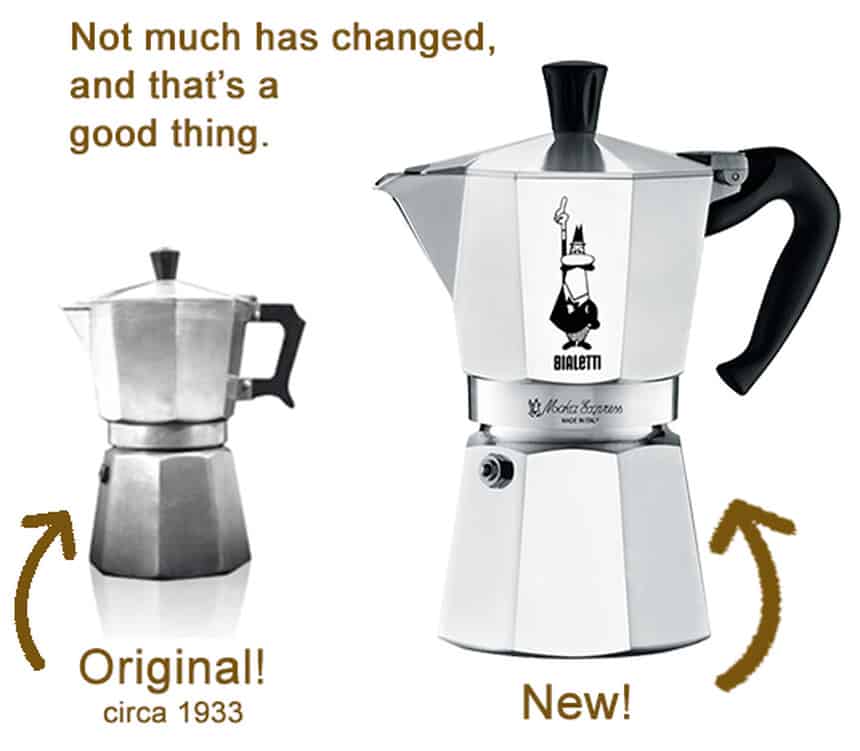As an Amazon Associate CoffeeXplore.com earns from qualifying purchases.
How to Know When Your Moka Pot Is Done: Signs, Sounds, and Timing Tips
Are you struggling to figure out how to know when your moka pot is done? It can be frustrating to end up with over-extracted or underwhelming coffee simply because you’re unsure of the right timing. The key to knowing when your moka pot is done brewing is recognizing specific visual and auditory cues, like the color change in the coffee and distinctive sounds such as hissing and gurgling.
But how do you ensure that you get this timing just right every time? In this guide, we’ll delve into the exact signs that indicate your moka pot has completed brewing, from the perfect coffee color to the sounds you should listen for. You’ll learn expert tips on avoiding common pitfalls and ensuring a flawless brew every time. Keep reading to uncover practical advice that will enhance your coffee-making skills and resolve any brewing issues you might face.
Key Facts:
– Moka pots typically take 5-10 minutes to brew coffee
– A hissing or gurgling sound indicates the brewing process is complete
– The coffee color changes from dark brown to honey as brewing nears completion
– Removing the pot from heat at the right time prevents over-extraction
– Different moka pot sizes and materials can affect brewing time and indicators
How Do You Know When Your Moka Pot is Done?

Moka pot brewing in progress – source
How do you know when your moka pot is done? This question plagues many coffee enthusiasts who want to achieve the perfect brew. The answer lies in understanding the visual and auditory cues that signal the end of the brewing process. Let’s dive into the key indicators that will help you master the art of moka pot coffee.
Visual Cues: Observing Coffee Color and Level
One of the most reliable ways to determine if your moka pot is done is by observing the color and level of the coffee as it brews. As the brewing process nears completion, you’ll notice a significant change in the coffee’s appearance.
Color Transition: Watch for the coffee’s color to shift from a dark brown to a lighter, honey-like hue. This color change is a clear signal that your brew is almost ready. According to Seven Mountains Coffee, this transition is one of the most reliable indicators that your moka pot is finishing its brew cycle.
Coffee Level: Keep an eye on the rising coffee level in the upper chamber of your moka pot. As the brewing process continues, you’ll see the coffee steadily filling this chamber. When the upper chamber is nearly full, and only steam is emerging from the spout, it’s a strong indication that your coffee is done.
Auditory Cues: Listening for Sounds
Your ears can be just as valuable as your eyes when determining if your moka pot is done. The brewing process produces distinct sounds that can guide you to the perfect cup.
Hissing and Gurgling: As the water in the lower chamber approaches boiling point, it creates pressure that forces the hot water through the coffee grounds and into the upper chamber. This process creates a characteristic hissing sound, followed by a gurgling noise. Blue Bottle Coffee recommends removing the pot from heat immediately upon hearing these sounds to prevent over-extraction.
Sputtering: Towards the end of the brewing process, you might hear a sputtering sound. This occurs when mostly steam (rather than water) is passing through the coffee grounds. It’s another clear sign that your moka pot is done and should be removed from the heat source.
Full Upper Chamber: A Clear Sign of Completion
When the upper chamber of your moka pot is full of coffee, it’s a definitive sign that the brewing process is complete. At this stage, you should observe:
- The upper chamber filled with rich, aromatic coffee
- Only steam emerging from the spout
- A cessation of the steady flow of coffee
The Spruce Eats advises turning off the heat as soon as you see these signs to ensure you don’t over-extract your coffee, which can lead to a bitter taste.
Timing Tips: Avoiding Over-Extraction

Moka pot brewing on a stovetop – source
Knowing when your moka pot is done isn’t just about recognizing the end of the brewing process—it’s also about understanding the optimal brewing time to avoid over-extraction. Let’s explore some essential timing tips to ensure you consistently brew delicious coffee.
Optimal Brewing Time for Different Moka Pot Sizes
The size of your moka pot plays a crucial role in determining the optimal brewing time. Generally, most moka pots take between 5 to 10 minutes to brew coffee, but this can vary based on several factors:
- Small Moka Pots (1-3 cups): These typically brew faster, often finishing in 4-6 minutes.
- Medium Moka Pots (4-6 cups): Expect a brewing time of 6-8 minutes.
- Large Moka Pots (9-12 cups): These may take 8-10 minutes or slightly longer to complete the brewing process.
Remember, these are general guidelines. Your actual brewing time may vary depending on factors like heat source intensity and the amount of water used. Home-Barista.com notes that for a 6-cup moka pot using low to medium heat, you should expect to see coffee coming out in 5 to 7 minutes.
Heat Regulation for Perfect Brewing
Proper heat regulation is crucial for achieving the perfect brew and knowing when your moka pot is done. Here are some key points to remember:
- Use medium heat: This allows for a steady, controlled brew. High heat can lead to rapid boiling and over-extraction.
- Monitor the process: Stay near your moka pot to observe the brewing progress and listen for the telltale sounds.
- Adjust as needed: If you notice the coffee flowing too quickly or slowly, adjust the heat accordingly.
Pro Tip: If you’re using an electric stove, consider preheating the water slightly before adding it to the moka pot. This can help speed up the process and prevent the coffee grounds from being exposed to heat for too long.
By mastering these timing and heat regulation techniques, you’ll be well on your way to consistently knowing when your moka pot is done and producing excellent coffee every time.
Troubleshooting Common Moka Pot Issues
Even with the best intentions and techniques, you might occasionally encounter issues when brewing with a moka pot. Let’s address some common problems and their solutions to ensure you always know when your moka pot is truly done.
Coffee Still in the Bottom Chamber
If you find that there’s still water or coffee in the bottom chamber after the brewing process seems complete, it could indicate a few issues:
- Insufficient heat: The water may not have reached the necessary temperature to create enough pressure. Solution: Increase the heat slightly and monitor the process closely.
- Overpacked coffee grounds: If the coffee is packed too tightly, it can prevent water from passing through efficiently. Solution: Use a lighter touch when filling the filter basket, and avoid tamping the grounds.
-
Incorrect grind size: If your coffee is ground too finely, it can impede water flow. Solution: Experiment with a slightly coarser grind.
WikiHow suggests that adjusting these factors can help ensure that all the water passes through the coffee grounds, giving you a clear indication of when your moka pot is done.
Overflows and Spills
Overflows can be messy and frustrating, not to mention a waste of good coffee. Here’s how to prevent them:
- Watch for early signs: If you see coffee bubbling out of the spout before the upper chamber is full, it’s a sign that you need to remove the pot from heat immediately.
-
Check the gasket: Ensure the rubber gasket is clean and in good condition. A worn or dirty gasket can lead to pressure loss and overflows.
-
Don’t overfill: Make sure you’re not exceeding the water level indicated by the safety valve in the lower chamber.
Remember, preventing overflows is not just about knowing when your moka pot is done—it’s about monitoring the entire brewing process. By staying attentive and making necessary adjustments, you can avoid these common issues and enjoy a perfect cup of moka pot coffee every time.
Additional Tips for Moka Pot Brewing

Comparison of old and new Moka pots – source
Mastering the art of moka pot brewing goes beyond just knowing when it’s done. Let’s explore some additional tips and tricks to elevate your moka pot coffee game.
Seasoning Your Moka Pot for Better Coffee
Seasoning your moka pot is a crucial step, especially for first-time users. This process helps remove any manufacturing residues and improves the flavor of your coffee. Here’s how to do it:
- Initial brew: Make your first batch of coffee without drinking it. This helps clean the pot and removes any metallic taste.
-
Repeat process: Some experts recommend repeating this process 2-3 times before using the pot for drinking coffee.
-
Regular use: The more you use your moka pot, the better seasoned it becomes, enhancing the flavor of your coffee over time.
Blue Bottle Coffee recommends this seasoning process as an essential step in moka pot preparation.
Handling the Moka Pot Safely
Safety should always be a priority when brewing with a moka pot. Here are some key safety tips:
- Use a potholder: The moka pot gets extremely hot during brewing. Always use a potholder or kitchen towel to handle it.
-
Avoid opening the lid: While brewing, the contents are under pressure. Never try to open the lid until the brewing process is complete and the pot has cooled slightly.
-
Clean with care: Allow the pot to cool completely before cleaning. Use warm water and a soft cloth to clean, avoiding harsh detergents that can affect the flavor of future brews.
-
Check the safety valve: Regularly inspect the safety valve to ensure it’s not blocked. This valve releases excess pressure and is crucial for safe operation.
By following these additional tips, you’ll not only know when your moka pot is done but also how to maintain it for consistent, delicious brews. Remember, practice makes perfect, so don’t be discouraged if your first few attempts aren’t ideal. With time and attention to detail, you’ll become a moka pot master.
FAQs About How Do You Know When Your Moka Pot is Done:
Q: How long does a moka pot take to brew?
A: A moka pot typically takes between 5 to 10 minutes to brew coffee. The exact time can vary depending on factors such as the size of the pot, the heat source intensity, and the amount of water used. Smaller pots (1-3 cups) may brew in 4-6 minutes, while larger pots (9-12 cups) can take up to 10 minutes or slightly longer.
Q: What should you do if coffee still remains in the bottom chamber of a moka pot?
A: If coffee remains in the bottom chamber, you should first check if the heat was sufficient. Try increasing the heat slightly on your next brew. Also, ensure that the coffee grounds aren’t packed too tightly in the filter basket, as this can impede water flow. Lastly, consider using a slightly coarser grind, as too fine a grind can also prevent water from passing through efficiently.
Q: How to adjust heat settings for moka pot brewing?
A: For optimal moka pot brewing, use medium heat. This allows for a steady, controlled brew. If the coffee is flowing too quickly, reduce the heat slightly. If it’s flowing too slowly or not at all, increase the heat a bit. Stay near your moka pot during brewing to monitor the process and make adjustments as needed. Avoid using high heat, as this can lead to over-extraction and bitter coffee.
Q: What are common problems with moka pot brewing and how to fix them?
A: Common moka pot problems include coffee remaining in the bottom chamber, overflows, and bitter taste. To fix these issues:
1. For coffee in the bottom chamber: Increase heat, use a coarser grind, or pack the grounds less tightly.
2. For overflows: Check the gasket, don’t overfill the water chamber, and remove from heat promptly when brewing is complete.
3. For bitter taste: Reduce brewing time by removing from heat earlier, use a coarser grind, or lower the water temperature.
Regular cleaning and proper assembly of the pot can prevent many of these issues.
Summary:
Knowing when your moka pot is done is crucial for brewing the perfect cup of coffee. By paying attention to visual cues like the color change from dark brown to honey and the coffee level in the upper chamber, as well as auditory cues such as hissing and gurgling sounds, you can master the art of moka pot brewing. Remember that the typical brewing time ranges from 5 to 10 minutes, depending on your pot’s size and heat source.
We’ve explored various aspects of moka pot brewing, from troubleshooting common issues to additional tips for maintenance and safety. By applying these insights, you’ll be well-equipped to consistently produce delicious moka pot coffee.
As you continue your coffee journey, remember that perfecting your technique takes time and practice. Each brew is an opportunity to refine your skills and deepen your appreciation for this classic brewing method. So, are you ready to put your newfound knowledge to the test and brew your next perfect cup of moka pot coffee?—

